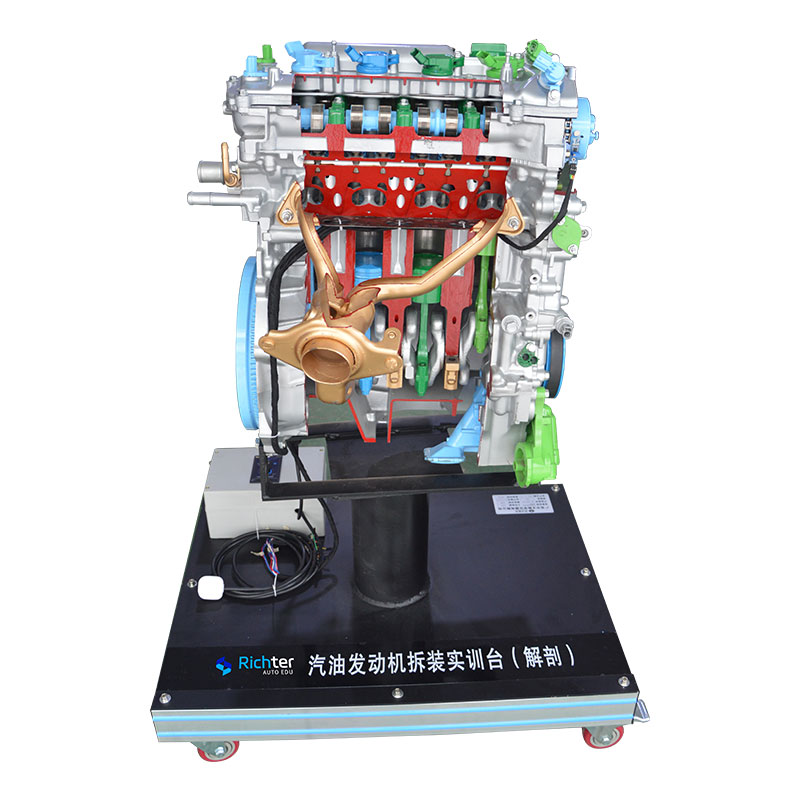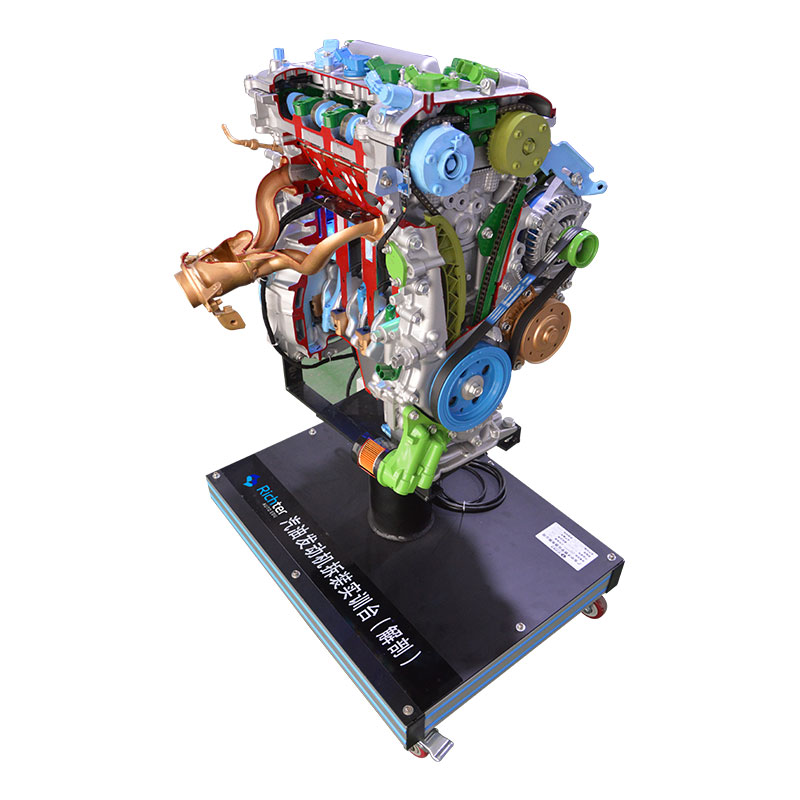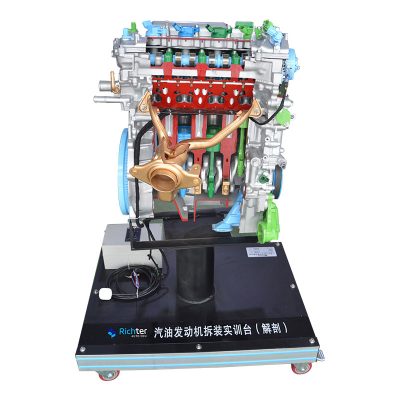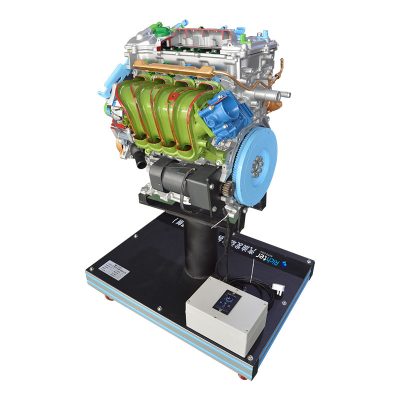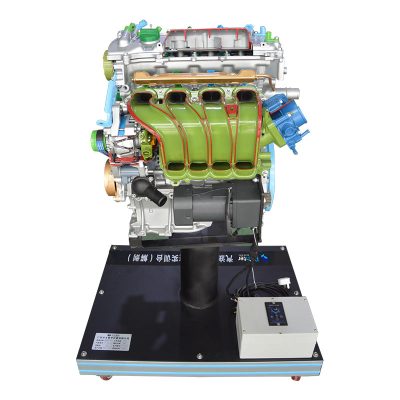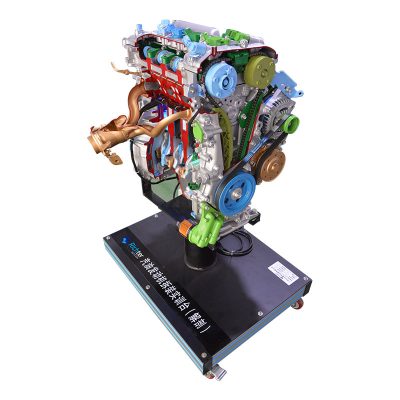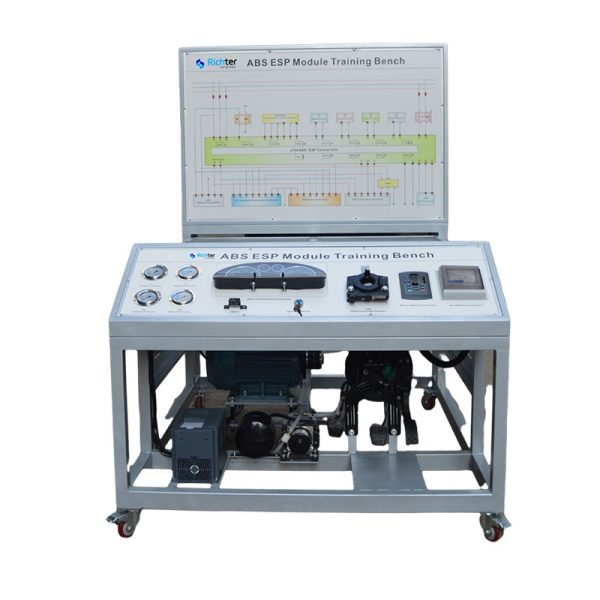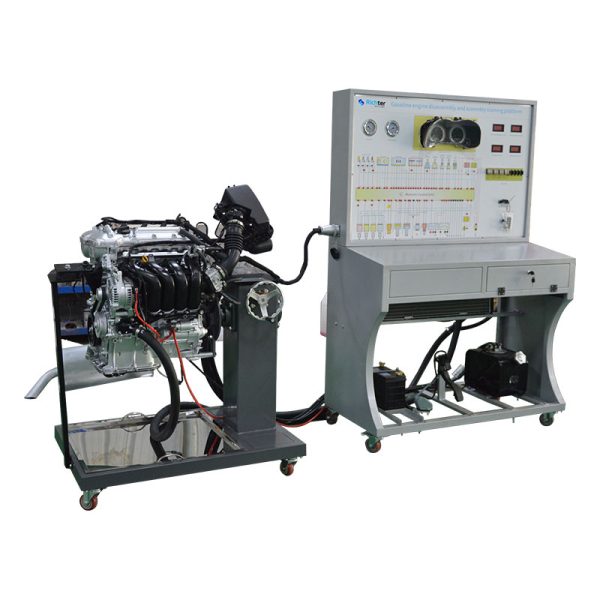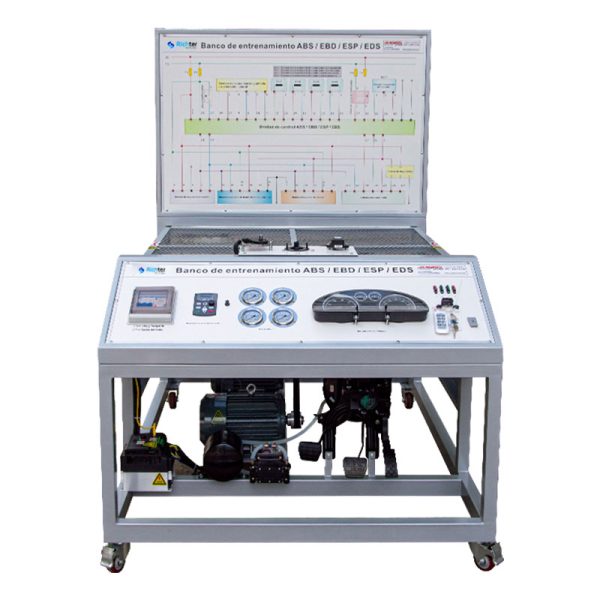Key Features and Functional Benefits
Real Gasoline Engine Assembly:
- This trainer utilizes a fully functional gasoline engine with a sectioned design, allowing the clear observation of both the internal and external structures of the engine. The dissection process exposes key components such as the crankshaft, pistons, camshaft, and valves, making it an invaluable educational resource.
Interactive Demonstrations of Engine Mechanisms:
- The trainer’s design includes color-coded mechanical sections, enabling students to differentiate between various parts and mechanisms. The sectioned layout helps facilitate a deeper understanding of engine components, such as the intake and exhaust systems, valve trains, and timing mechanisms.
Real-Time Operational Simulation:
- Powered by a single-phase gear reduction motor, the engine operates at a low speed, allowing students to observe the movements of the crankshaft and other internal components in real time. This realistic motion simulation provides insight into the dynamic operations of a gasoline engine.
Mobile and Durable Design:
- The high-strength steel structure ensures durability, while the mobile bench design with self-locking casters offers convenience for transporting the unit between classrooms and storage spaces. The spray-treated surface adds to its aesthetic appeal, making it a robust and professional addition to any training facility.
Comprehensive Dissection Coverage:
- Key engine parts such as the cylinder block, crankshaft, valve cover, cylinder head, intake and exhaust manifolds, filters, and water pump are clearly visible and accessible for detailed study. Students can also observe the functionality of the timing mechanism and its synchronization with other engine components.

Specifications
- Overall Dimensions: 800 x 600 x 1200 mm (L×W×H)
- Power Supply: 220V ±10%, 50Hz
- Single-Phase Gear Reduction Motor:
- Rated Voltage: AC 220V, 50Hz
- Rated Power: 250W
- Rated Speed: 0-15 RPM
- Operating Temperature: -40℃ ~ +50℃
- Steel Tube Dimensions: 60×40×3 mm
- Mobile Casters: 100×50 mm
Educational Value for Students
The Gasoline Engine Dissection Trainer provides students with the unique opportunity to engage directly with real-world engine parts and their respective movements. Students can observe and learn the function of every component in a gasoline engine and understand the crucial roles each part plays in the overall operation of the engine. The low-speed operation allows them to witness how mechanical systems work in real time, enhancing comprehension of engine mechanics, repair, and diagnostics.
Value for Instructors
For instructors, this trainer is a vital tool for delivering complex lessons on engine mechanics. It supports a range of learning activities, from theoretical instruction to practical exercises, making it easier for educators to demonstrate engine operations, diagnostics, and troubleshooting techniques. The mobile design and clear, accessible sections ensure a smooth and effective teaching process, while the high-quality construction ensures long-term durability and reliability.
Why Choose the Gasoline Engine Dissection Trainer?
- Hands-On Learning: Students gain real-world experience with gasoline engine components and functionality.
- Durable and Mobile: Designed to withstand classroom use while being easily transported and set up.
- Complete Visualization: Clear sectioning allows for in-depth study of engine mechanics.
- Practical and Functional: Real engine parts and low-speed motion simulation enhance learning of engine operations.
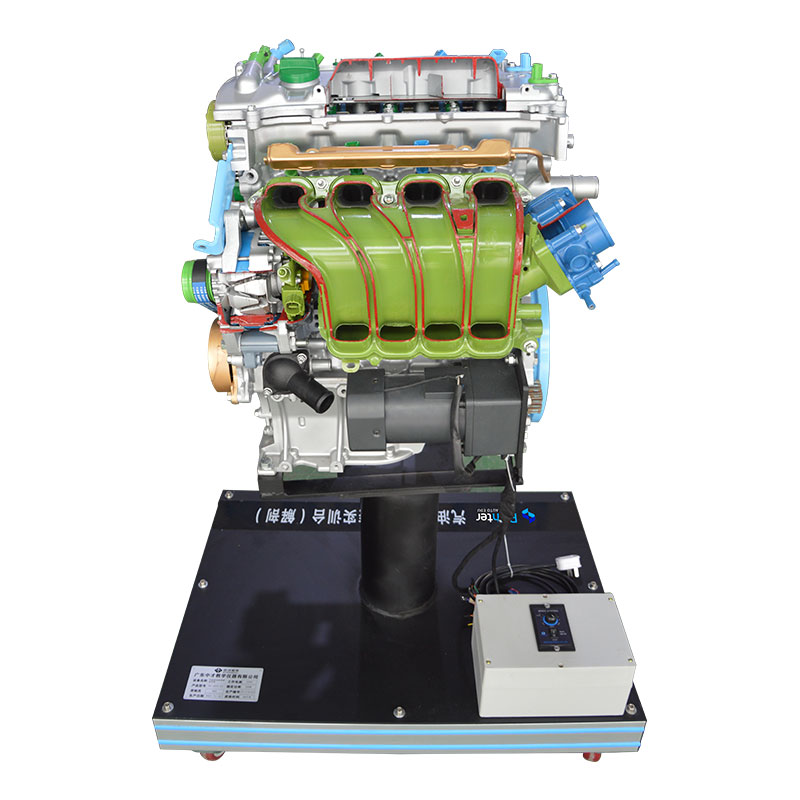
Optional Equipment for Enhanced Learning
- Diagnostic Tools: Expand the training experience with diagnostic scan tools and oscilloscopes (sold separately) to teach students about fault detection and analysis in real-time engine scenarios.
Conclusion
The Gasoline Engine Dissection Trainer from Richter is an essential educational tool for anyone seeking to advance their understanding of gasoline engine mechanics. Its detailed dissection, real-time operational features, and practical design make it an indispensable asset for automotive training programs. By offering both visual and hands-on experiences, this trainer ensures that students acquire the technical skills necessary to succeed in automotive repair and diagnostics.


